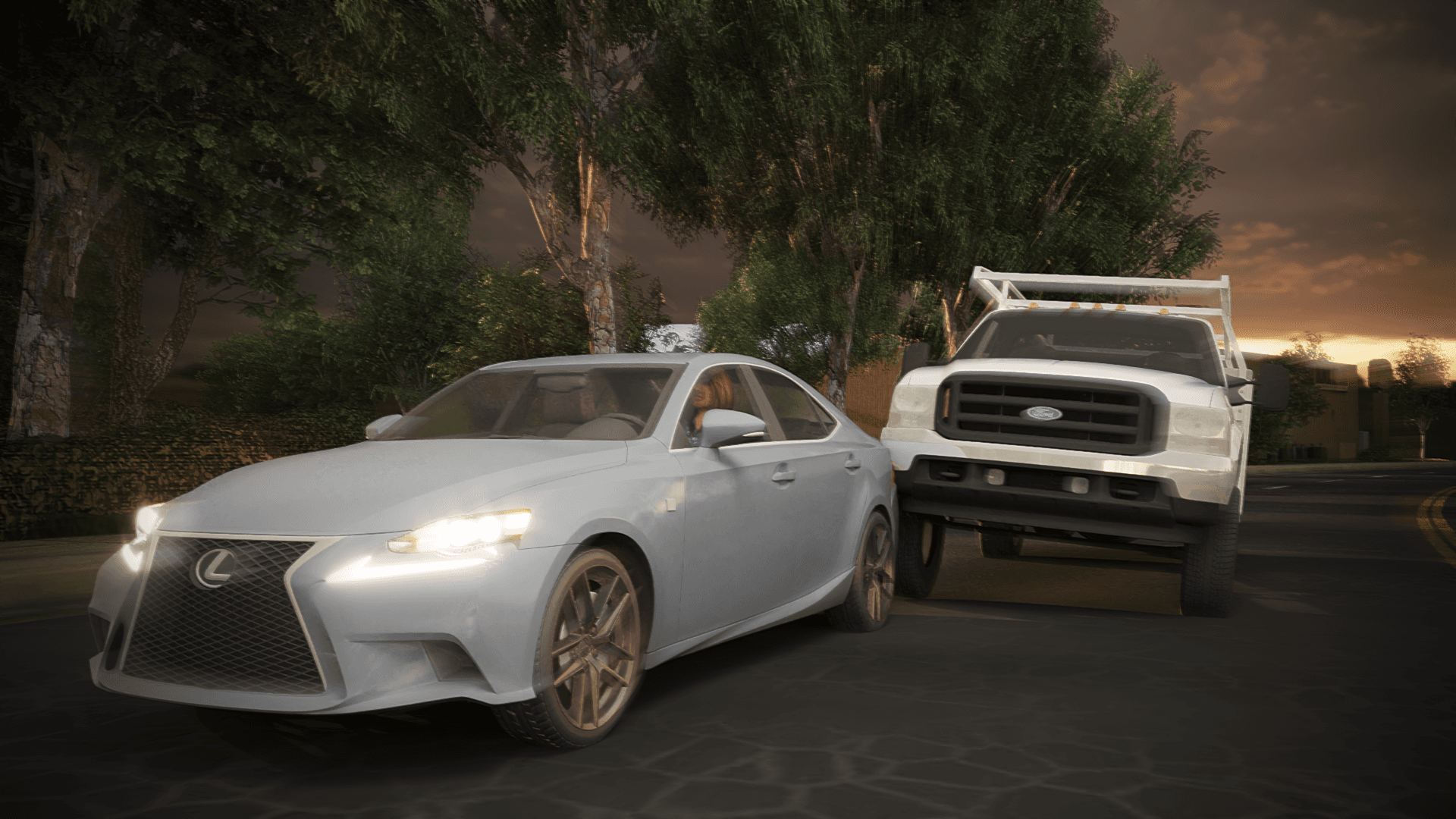
Seek and Illustrate the Truth -
Call Now 1-415-754-7772

TBI and Spinal Injury from Low-Speed Collision
Ms. Suarez was driving on a two-lane road that merged into one lane when she was struck by a pickup truck from behind. Her head whiplashed, but the accident didn't result in notable physical damage to her body or vehicle and didn't require emergency response.
However, in the weeks following this accident, Ms. Suarez would report consistent headaches, neck pain, back pain, and arm numbness. She hadn't experienced these symptoms prior to the accident, and so she received a medical inspection. Brain scans found evidence of axonal shearing in her right parietal lobe, signifying this accident was more consequential than initially thought.
After informing the truck driver's insurance provider of her injuries, they stated that not only could these injuries not have come from this accident, but also that she was at fault and that they would not cover her medical or vehicle repair bills. Feeling helpless, Ms. Suarez reached out to a skilled plaintiff attorney to seek justice.
Her attorney, Seth O’Dell, realized that to convince the insurance company that their client was at fault and that this low speed rear-end collision caused Ms. Suarez’s TBI, they would need an advanced demonstrative exhibit that showed how the accident occurred and what the long-term effects on his client were. He decided to enlist 3D Forensic to bring her story to life.
Challenge:
- Connect the low-speed traffic accident caused by the defendant to Ms. Suarez's ensuing non-visible injuries
Solution:
- Animate the accident reconstruction
- Connect the forces from this accident to a 3D model of Ms. Suarez
- Show how these forces would result in her ensuing injuries
The team dove into the medical records and brain scans related to this incident. Along with Ms. Suarez's TBI, evidence of damage to multiple vertebrae was found and would require additional demonstration.
As medical professionals realize today, the brain is a very sensitive, loose organ. Any force that pushes the brain to impact the wall of the skull can cause damage. This is why even small accidents without further physical markings can leave permanent damage.
To visualize her TBI, the team animated the effects of a sudden forward force pushing the human neck and skull. The brain is shown hitting the front and top of the skull where scans showed evidence of axonal shearing. Damage in this part of the brain leads to headaches as well as visual and spatial issues.
In demonstrating Ms. Suarez’s spinal damage, the team built on the same medical model showing the forward push from the rear-end accident. The case's experts estimated that eight Gs of force were placed on her neck and spine. The team animated this force pressing on the C5, C6 and T1 vertebrae of her spinal cord, a crucial section of the spinal cord to supporting the head. For reference, this force equaled eight times the regular force of gravity, which can severely impact the human spine.
Finally, the team animated the accident itself with true speeds for both vehicles. While this low-speed collision wouldn’t appear to cause a significant injury, when paired with the team's medical analysis, the force on such sensitive body parts becomes clear.
When this analysis was shown in mediation, defense realized the significance of the resulting damage. A settlement that addressed Ms. Suarez's extensive medical treatment and permanent brain damage was issued.

“3D Forensic makes the task of communicating to jurors the impact of injuries to a person's life much easier through the use of their medical animations. Jason Fries and his team are excellent to work with and they consistently deliver a top-quality product.”-Seth O'Dell; Swanson O'Dell
**NOTE: Each case is affected by unique factors and requires an independent forensic approach. These case studies serve as general applications and are not universally applicable. The true identities of subjects, entities, and locations have been changed to protect anonymity.**
Talk to Our Forensic Team
Let Us Help You Seek & Illustrate The Truth
By submitting this form, I confirm that I have read and understood the 3D Forensic Privacy Statement.
"We have used Jason Fries and his team twice to create medical videos depicting complex surgeries. The videos impressed both the jury and the defense attorneys. Perhaps most helpful, Jason will work on short notice and provide a persuasive product."

Robert Igleheart
Rouda, Feder, Tietjen & McGuinn
